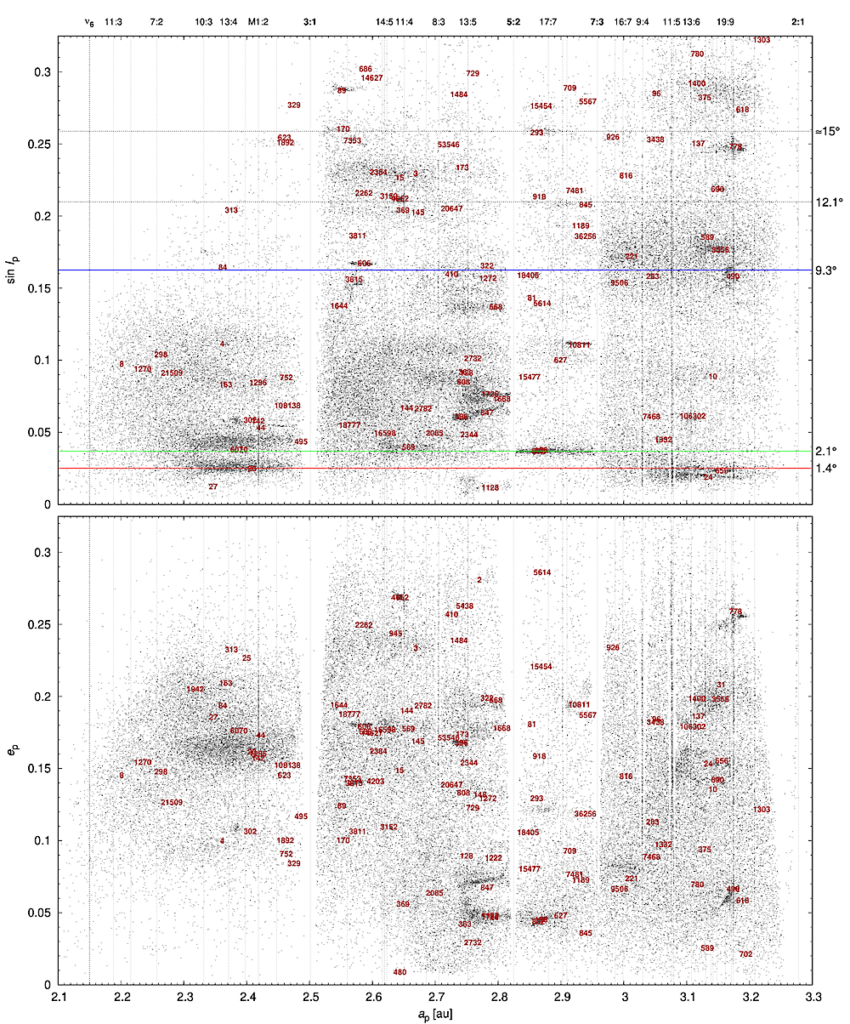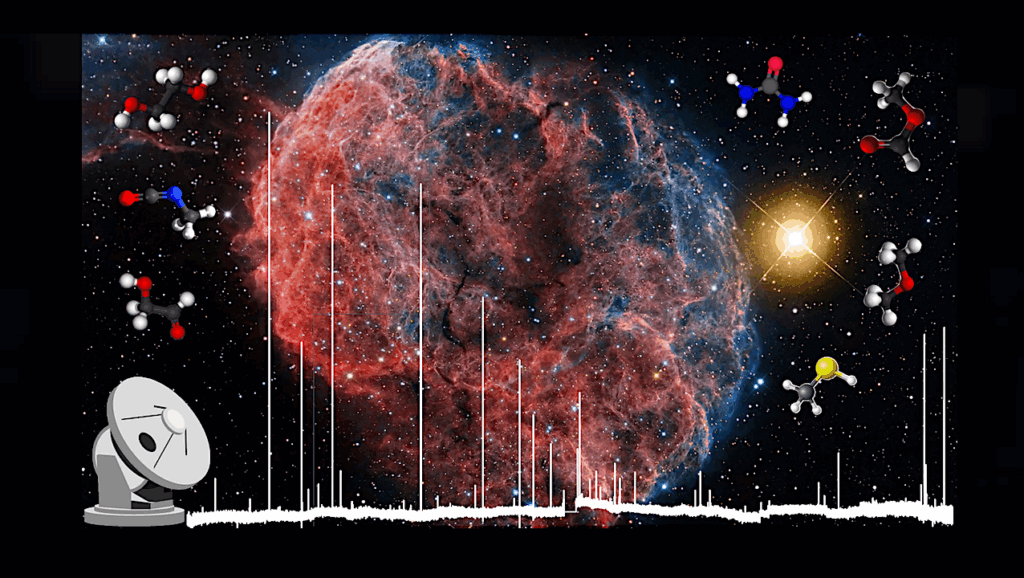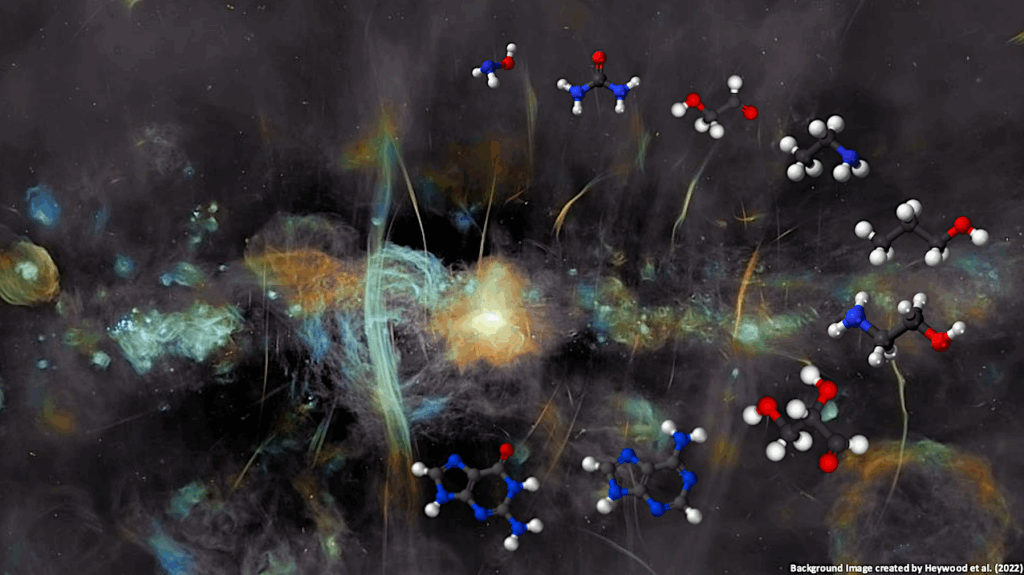Source Regions of Carbonaceous Meteorites and NEOs

The present work aims to determine the source regions of carbonaceous chondrites (CM, CI, CO, CV, CK, CR, CH, CB, or C-ungrouped). We studied 38 individual asteroid families, including young and old ones, and determined their contributions to the NEO populations at metre and kilometre sizes using collisional and orbital models.
Our models are in agreement with spectroscopic observations of NEOs, cosmic-ray exposure ages of meteorites, statistics of bolides, infrared emission from dust bands, composition of interplanetary dust particles (IDPs), or abundance of extraterrestrial helium-3.
We identified the Veritas, Polana and Eos families as the primary sources of CM/CR, CI and CO/CV/CK chondrites, respectively. Substantial contributions are also expected from CM-like König and CI-like Clarissa, Misa and Hoffmeister families. The source regions of kilometre-sized bodies are generally different.
The Adeona family is by far the main source of CM-like NEOs, whereas the Polana (low-i) and Euphrosyne (high-i) families are at the origin of most CI-like NEOs. The Polana family is the likely source of both Ryugu and Bennu. We were able to link spectroscopically and dynamically several NEOs to the Baptistina family.
Finally, it appears that the pre-atmospheric flux of carbonaceous chondrites at metre sizes is about the same as that of ordinary chondrites. Given the difference in fall statistics between the two groups (80\% versus 4.4%), this implies either substantial atmospheric fragmentation of carbonaceous bodies at the level of ∼0.5MPa, or destruction by thermal cracking and water desorption. The source regions of most meteorites and kilometre-sized NEOs have now been determined; including some minor classes like enstatite chondrites and achondrites (Nysa, Hungaria), acapulcoites/lodranites (Iannini).

”Faint Main Belt”, showing only bodies with the absolute magnitude close to the limit of the Catalina Sky Survey, i.e., H ≳ 19.25 + 5(log(2.2(1 − 0.1)) + log(2.2 − 1))) − 5(log(a(1 − e)) + log(a − 1))). The proper semimajor axis ap versus eccentricity ep (bottom) versus inclination sin ip (top) are plotted; together with locations of the mean-motion resonances (vertical lines), IRAS dust bands (horizontal lines), and known asteroid families (Nesvorny et al. 2015) (labels). Big and old ones are almost invisible ´ here (e.g., “4” Vesta). Small and young ones –having a steep SFD– are prominent. The distribution of faint bodies is surprisingly irregular. The concentrations are directly related to the sources of meteorites: L .. “20” Massalia (Marsset et al. 2024), H .. “158” Koronis (Broz et al. 2024), CM .. “490” Veritas, CI .. “142” Polana, CO ˇ /CV/CK .. “221” Eos, M .. “293” Brasilia, or M .. “606” Brangane (this work). — astro-ph.EP
M. Brož, P. Vernazza, M. Marsset, R.P. Binzel, F. DeMeo, M. Birlan, Ch. Avdellidou, F. Colas, S. Anghel, S. Bouley, C. Blanpain, J. Gattacceca, S. Jeanne, L. Jorda, J. Lecubin, A. Malgoyre, A. Steinhausser, J. Vaubaillon, B. Zanda
Comments: 47 pages, 31 figures, accepted in A&A
Subjects: Earth and Planetary Astrophysics (astro-ph.EP); Geophysics (physics.geo-ph)
Cite as: arXiv:2406.19727 [astro-ph.EP] (or arXiv:2406.19727v1 [astro-ph.EP] for this version)
Submission history
From: Miroslav Brož
[v1] Fri, 28 Jun 2024 08:18:43 UTC (42,869 KB)
https://arxiv.org/abs/2406.19727
Astrobiology, Astrochemistry,








